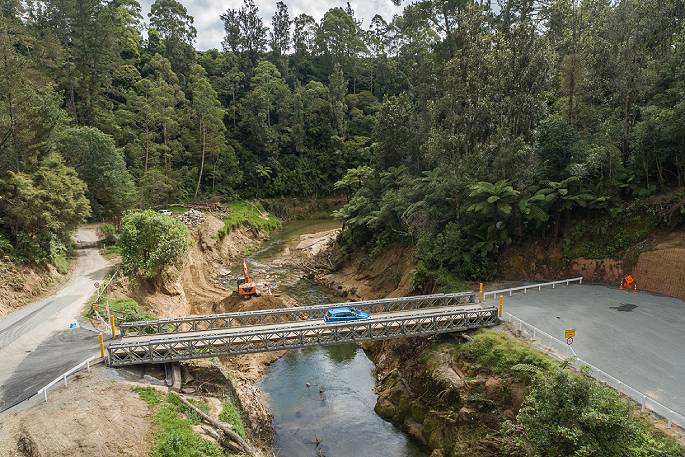During the early years of World War II, the British Army encountered difficulties in advancing across Europe due to the destruction of infrastructure, particularly bridges, by retreating enemy forces. Existing bridge designs were either too heavy and cumbersome to transport or required extensive time and resources to construct, hindering the progress of the advancing troops and their supporting armoured units, including tanks.
Sir Donald Bailey, a British civil engineer, recognised the need for a more efficient and adaptable bridging solution. He designed the Bailey Bridge to be lightweight, modular, and easily transportable, enabling rapid deployment by a small team of soldiers using minimal equipment.
One of its advantages was its ability to support heavy loads which made it well-suited for accommodating armoured vehicles,tanks which weighed around 30 tons.
Developed in 1940-1941, the versatility of the Bailey bridge was one of its most significant advantages. It could span gaps ranging from 10 to 240 feet, depending on the configuration and number of panels used. This adaptability made it suitable for various terrains and waterways, proving invaluable in the rapidly changing battlefield conditions of World War II. The video below explains it far better than I can and it is well worth the 6 minutes to watch.
During the war, Bailey bridges were extensively used by the Allied forces in Europe, North Africa, and Asia. They enabled the quick establishment of supply lines, troop movements, and vehicle crossings, often under enemy fire. Perhaps the most famous use of the Bailey Bridge was during the Battle of Remagen in 1945, when U.S. forces hastily constructed a bridge across the Rhine River, allowing them to establish a crucial foothold in Germany.
The construction of the Bailey bridge at Remagen was a remarkable feat of military engineering because it was built while under enemy fire. On March 7, 1945, U.S. forces captured the Ludendorff Bridge, a railway bridge spanning the Rhine River at Remagen, Germany. Recognising the strategic importance of establishing a bridgehead on the eastern bank of the Rhine, the U.S. Army quickly set about constructing a Bailey bridge parallel to the captured bridge.
The construction process began with the assembly of the bridge's modular components on the western bank of the Rhine. Engineers and soldiers worked tirelessly to prepare the bridge sections, ensuring that they were ready for rapid deployment once the site was prepared. As the components were being assembled, U.S. combat engineers worked to clear the eastern bank of the Rhine of obstacles and fortifications, often under enemy fire. They also had to contend with the remnants of the Ludendorff Bridge, which had been damaged by German demolition attempts and was in danger of collapsing.
Once the site was prepared, the pre-assembled Bailey bridge sections were transported across the river using pontoon ferries. The engineers then began the process of connecting the sections and anchoring the bridge to the riverbanks. The entire construction process was carried out under constant enemy fire, with German forces attempting to destroy the bridge and halt the U.S. advance.
Despite these challenges, the U.S. engineers completed the Bailey Bridge construction in just 36 hours, allowing for the rapid movement of troops, vehicles, and supplies across the Rhine. The bridge remained in use for several weeks, playing a crucial role in the establishment of the U.S. bridgehead and the subsequent advance into Germany.

Bailey bridges, or their modern variants, are still in use today by military forces and disaster relief organisations worldwide. While the original design has been refined and improved over the years, the core principles of modularity, portability, and rapid assembly remain the same.
In military applications, Bailey bridges continue to provide vital infrastructure support in conflict zones, allowing for the quick establishment of supply lines and troop movements.
In civilian applications, Bailey bridges are often employed in disaster relief efforts, such as in the aftermath of earthquakes, floods, or hurricanes, where they can be rapidly deployed to restore critical transportation links and facilitate the delivery of aid and emergency services.
Additionally, Bailey bridges are sometimes used in construction projects where temporary bridges are needed, such as during the renovation or replacement of existing bridges.

Overall, the enduring utility and adaptability of the Bailey bridge design have ensured its continued use in various contexts, more than 80 years after its initial invention.
Meanwhile, in 2024, we are spending millions on educating our military on what pronoun they should use. Go figure.
BLOG COMMENTS POWERED BY DISQUS


















































